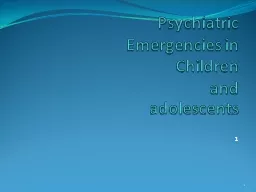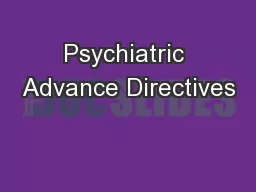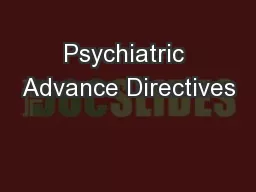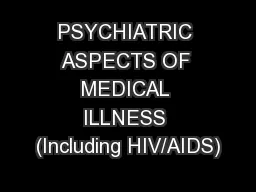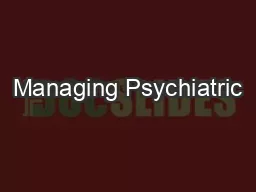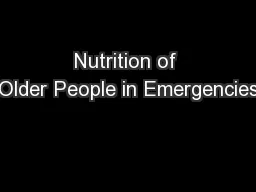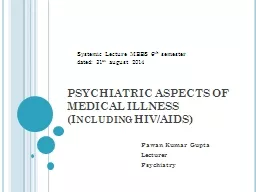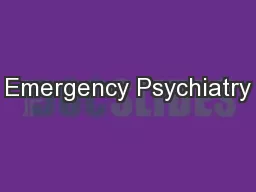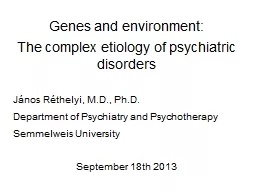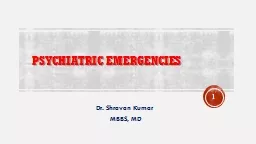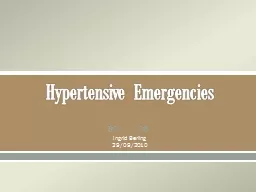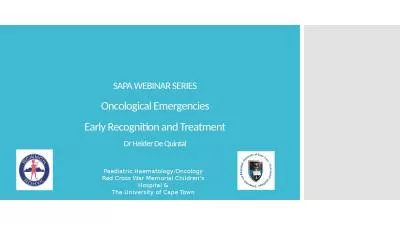PPT-Psychiatric Emergencies in Children
Author : conchita-marotz | Published Date : 2017-10-27
and adolescents 1 1 introduction Few seek psychiatric intervention even during crisis Usually seek by parents relatives teachers therapists physicians and child
Presentation Embed Code
Download Presentation
Download Presentation The PPT/PDF document "Psychiatric Emergencies in Children" is the property of its rightful owner. Permission is granted to download and print the materials on this website for personal, non-commercial use only, and to display it on your personal computer provided you do not modify the materials and that you retain all copyright notices contained in the materials. By downloading content from our website, you accept the terms of this agreement.
Psychiatric Emergencies in Children: Transcript
Download Rules Of Document
"Psychiatric Emergencies in Children"The content belongs to its owner. You may download and print it for personal use, without modification, and keep all copyright notices. By downloading, you agree to these terms.
Related Documents

